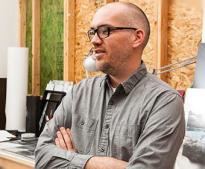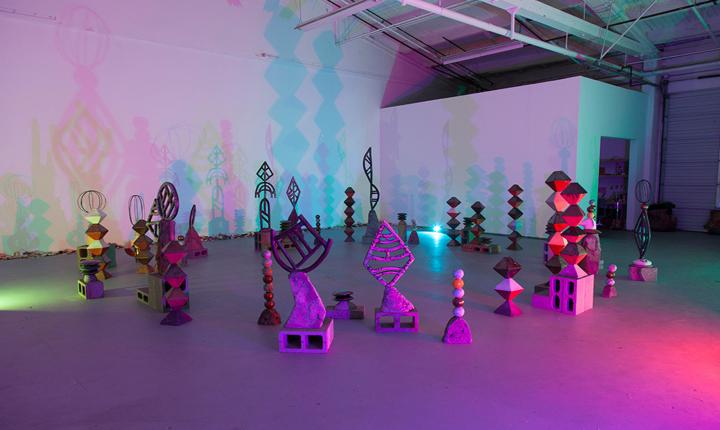Artist-run exhibition space
 About 10 years ago, Eugene artist Mike Bray and a group of fellow MFA students from the University of Oregon began looking for a venue to show contemporary art from around the country. Display space is rare, and they had nearly given up when Bray (a 2013 Hallie Ford Fellow in the Visual Arts) stumbled on a warehouse section near downtown Springfield. Nondescript from the outside, the warehouse, part of an old lumber mill, opened up to a massive space with rustic charm.
About 10 years ago, Eugene artist Mike Bray and a group of fellow MFA students from the University of Oregon began looking for a venue to show contemporary art from around the country. Display space is rare, and they had nearly given up when Bray (a 2013 Hallie Ford Fellow in the Visual Arts) stumbled on a warehouse section near downtown Springfield. Nondescript from the outside, the warehouse, part of an old lumber mill, opened up to a massive space with rustic charm.
The group quickly set to work transforming the environment, painting half the walls gallery white and leaving half in their original state. And soon, Ditch Projects (named for a dried-up creek in the complex) was born.
In the intervening years, Ditch has built a national reputation as an artist-run exhibition and performance venue with a unique exhibition space. “In the artists’ scene, you always hear about what’s happening at Ditch,” says Amy Bernstein, a Portland artist who showed her work in February 2018. The gallery’s spacious walls allowed Bernstein to show a 28-foot painting she had just completed on commission to a fashion house.
“The space is phenomenal — it’s the size of an airplane hangar — and there’s nothing like it anywhere else in Oregon.”
Collaboration, camaraderie
Ditch Projects is run more like a co-op than a traditional gallery, a feature that adds to its allure among art circles. Members pay dues and hold twice yearly pitch meetings, where they decide which artists should be invited to show. None of the works are for sale; artists come to have a show in a museum-quality space, to work with fellow creatives and to try out new work without fear of failure.
Setting up the shows is a collaborative affair, with exhibiting artists and Ditch members working together. It’s come a long way from the scramble of early shows and a nearly non-existent budget. “We had a lot of hiccups in the beginning, ” Bray says. “It was hard to engage the community. We didn’t have any money, so we would have an artist coming from L.A. and sleeping on a couch. And sometimes we would be installing on Friday and opening on Saturday.
“Word of mouth gave us the time to grow and develop naturally, and I’d say we were better known in L.A. and Chicago than we were in Eugene or Springfield,” Bray says.
But one thing hasn’t changed — the camaraderie. “It has a community feel to it,” Bray says. “We don’t think of ourselves as curators. We ask artists to come in and we help them do what they want. It’s a way to meet someone you really admire and gives you a way to know them.”
“The folks down there were so helpful and so relaxed, and I was excited to make a show that was for my peers,” Bernstein says. “It was one of my proudest shows.”
From ‘no-profit’ to nonprofit
Ditch Projects has hosted about 220 shows to date, with artists from across the country. The group recently obtained nonprofit status in order to access grants and expand its projects. “We are growing up a little bit as an institution,” Bray explains.
“We are fine-tuning our model so we can support the artists coming to the show and those representing Ditch.”
As part of its 10-year birthday celebration, Ditch Projects is planning a series of events exploring the idea of exhibition utopias, looking at the artists that start these kinds of spaces and why they do it. Besides an exhibition of visual art, half from previously shown artists and half from the collective, the event will feature readings and roundtable discussions.
“The thing that is most important about Ditch is that it’s run by artists; that changes the dynamic and it’s awesome,” Bernstein says.
“It’s so needed in this mix of what we have in Oregon. We have incredible organizations that support us, but having something run by artists is the needed element in our ecosystem.”
Learn more: https://ditchprojects.com/

